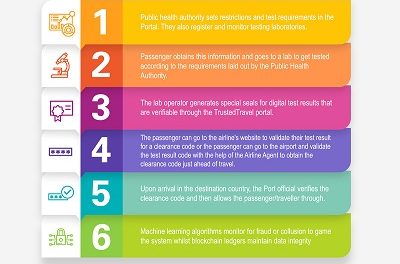
It’s trillions not billions…lost to cyber-crime!

By Johann van Rooyen.
Green Enterprise Solutions Senior Technical Advisor.
Every day we go online, our devices are Internet-enabled, and we rarely think about the security risks we take and how exposed we are. However, in 2023 the cost of cybercrime is predicted to hit $8 trillion and will grow to $10.5 trillion by 2025, according to Cybersecurity Ventures. That is trillion, not billion, more than Apple and Amazon are worth combined, and that’s just in one year.
Like theft and burglaries, it is exceedingly likely that at one point, you will fall victim to cybercrime either as an individual or as an organization. When this happens, there must be a response plan in place. This is where most people and organizations falter. They assume their virus scanner will keep them safe. In this day and age, that’s not enough; procedures need to be in place for investigating and containing the breach and notifying affected individuals and authorities. There also needs to be a plan for restoring systems and data after a breach.
Cybercrime and cybersecurity are constantly evolving; new threats emerge every year in different forms. Education is essential as is recognising some of the different forms of cybercrime.
Ransomware is a type of malware that infects a computer system and holds it hostage; it encrypts files, making them inaccessible to the user. The attacker then demands a ransom payment in exchange for the decryption key. One reason for the rise of ransomware attacks is that they are incredibly profitable for cybercriminals. The cost of paying the ransom is usually much lower than restoring the system from backups or dealing with the fallout from a data breach.
Chat GPT and Artificial Intelligence language models are everywhere, and cybercriminals leverage current trends and Artificial Intelligence (AI) to launch more sophisticated attacks. The primary issue is that AI-powered attacks quickly adapt to changing environments, making them harder to detect and defend against. It’s a whole new challenge to keep organizations and individuals safe. AI-powered attacks take different forms, phishing emails, malware, or social engineering scams. For example, AI can be used to create compelling phishing emails that appear to be from trusted sources, making it easy for attackers to trick users into clicking on malicious links or downloading malware. One click is all it takes.
Hypervigilance is necessary, and advanced cybersecurity tools and techniques can detect and respond to these threats in real time. This includes using AI-based cybersecurity solutions to identify and block attacks before they cause damage.
Another way in which cybercriminals try to infiltrate systems is by attacking an organization’s user base by using tactics like phishing, social engineering, and other methods to gain unauthorized access. It happens because the user or human error remains one of organisations’ most significant cybersecurity risks, as attackers exploit the human element to gain entry to networks and systems. The prioritization of user education and awareness training to mitigate the risks posed by user-targeted attacks is essential.
Cybersecurity is critical to modern business and personal life and should be top of mind. Just like you check, double, and sometimes triple-check if you lock your front door or car, ICT systems deserve the same level of checking. It demands ongoing vigilance and attention. Cyber-security companies and ICT specialists must stay one step ahead as long as it remains lucrative for criminals. This means investing in systems and getting experts to constantly monitor an organization’s systems. Complacency can be costly and sometimes mean the end of a business. By staying informed, educating employees about the pitfalls, and taking proactive measures to protect systems and data, individuals and organizations can help ensure their safety and security in the digital age.












































